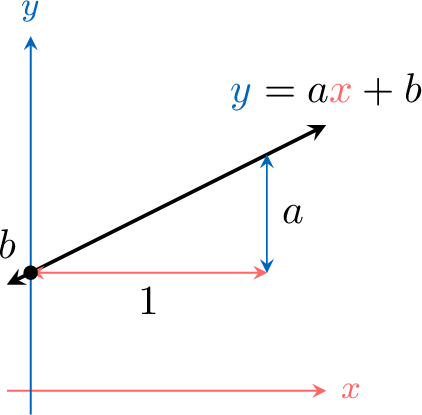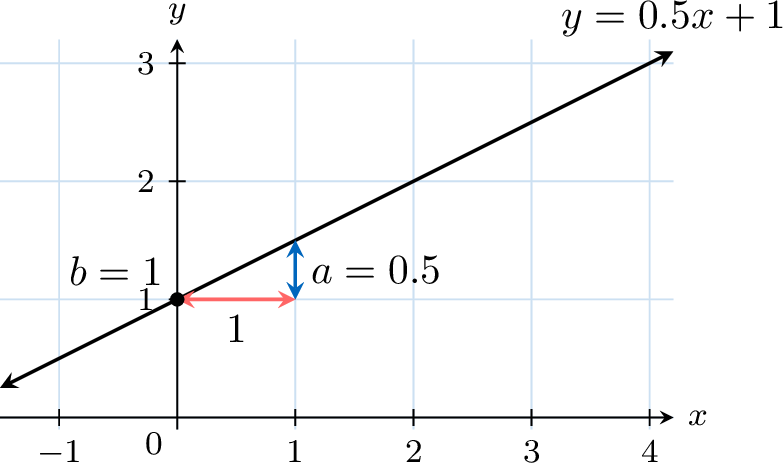Linear Functions
Definition
Definition Linear Function
A linear function is defined by:$$f(x) = ax + b$$where \(a\) is the slope, and \(b\) is the \(y\)-intercept.
Example
Access to a swimming pool costs a fixed entrance fee of \(\dollar\)12, plus \(\dollar\)5 for each hour you stay. Let \(P(x)\) be the total price for \(x\) hours at the pool. Find a formula for \(P(x)\).
The total cost is \(\dollar\)12 for entry plus \(\dollar\)5 for each of \(x\) hours:
- For \( \textcolor{colordef}{x=1}\), \(P(\textcolor{colordef}{1}) = 12 + 5 \times \textcolor{colordef}{1}\)
- For \( \textcolor{colordef}{x=2}\), \(P(\textcolor{colordef}{2}) = 12 + 5 \times \textcolor{colordef}{2}\)
- \(\vdots\)
- For \( \textcolor{colordef}{x}\), \(P(\textcolor{colordef}{x}) = 12 + 5 \times \textcolor{colordef}{x}\)
Graph
Proposition Graph
The graph of a linear function \(f(x) = ax + b\) is a straight line of equation \(y = ax + b\), where \(a\) is the slope and \(b\) is the \(y\)-intercept.

Example
For the function \(f(x)=0.5x+1\), draw its graph.
